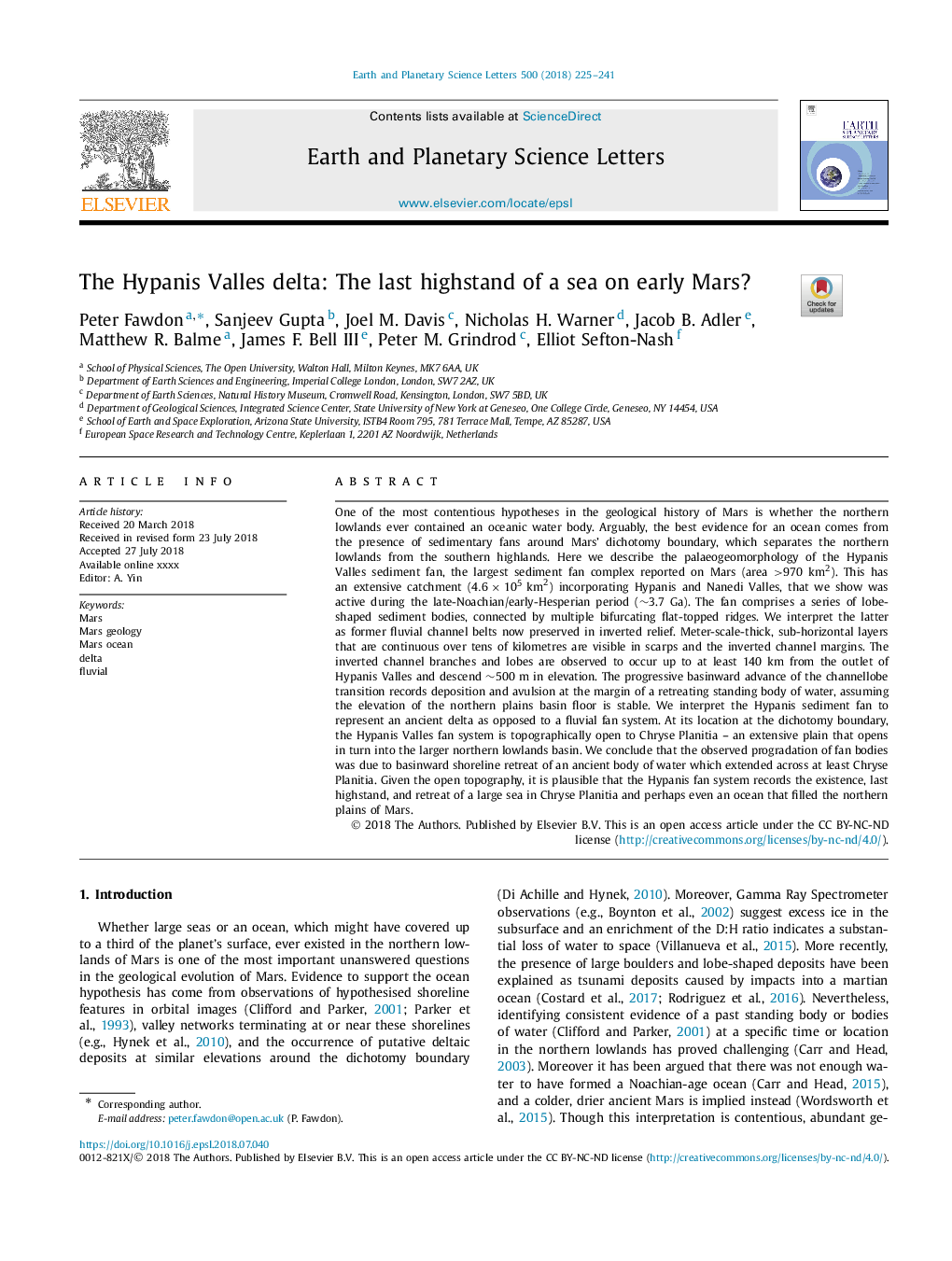| کد مقاله | کد نشریه | سال انتشار | مقاله انگلیسی | نسخه تمام متن |
|---|---|---|---|---|
| 8906670 | 1634656 | 2018 | 17 صفحه PDF | دانلود رایگان |
عنوان انگلیسی مقاله ISI
The Hypanis Valles delta: The last highstand of a sea on early Mars?
دانلود مقاله + سفارش ترجمه
دانلود مقاله ISI انگلیسی
رایگان برای ایرانیان
کلمات کلیدی
موضوعات مرتبط
مهندسی و علوم پایه
علوم زمین و سیارات
علوم زمین و سیاره ای (عمومی)
پیش نمایش صفحه اول مقاله

چکیده انگلیسی
One of the most contentious hypotheses in the geological history of Mars is whether the northern lowlands ever contained an oceanic water body. Arguably, the best evidence for an ocean comes from the presence of sedimentary fans around Mars' dichotomy boundary, which separates the northern lowlands from the southern highlands. Here we describe the palaeogeomorphology of the Hypanis Valles sediment fan, the largest sediment fan complex reported on Mars (area >970 km2). This has an extensive catchment (4.6Ã105Â km2) incorporating Hypanis and Nanedi Valles, that we show was active during the late-Noachian/early-Hesperian period (â¼3.7 Ga). The fan comprises a series of lobe-shaped sediment bodies, connected by multiple bifurcating flat-topped ridges. We interpret the latter as former fluvial channel belts now preserved in inverted relief. Meter-scale-thick, sub-horizontal layers that are continuous over tens of kilometres are visible in scarps and the inverted channel margins. The inverted channel branches and lobes are observed to occur up to at least 140 km from the outlet of Hypanis Valles and descend â¼500 m in elevation. The progressive basinward advance of the channellobe transition records deposition and avulsion at the margin of a retreating standing body of water, assuming the elevation of the northern plains basin floor is stable. We interpret the Hypanis sediment fan to represent an ancient delta as opposed to a fluvial fan system. At its location at the dichotomy boundary, the Hypanis Valles fan system is topographically open to Chryse Planitia - an extensive plain that opens in turn into the larger northern lowlands basin. We conclude that the observed progradation of fan bodies was due to basinward shoreline retreat of an ancient body of water which extended across at least Chryse Planitia. Given the open topography, it is plausible that the Hypanis fan system records the existence, last highstand, and retreat of a large sea in Chryse Planitia and perhaps even an ocean that filled the northern plains of Mars.
ناشر
Database: Elsevier - ScienceDirect (ساینس دایرکت)
Journal: Earth and Planetary Science Letters - Volume 500, 15 October 2018, Pages 225-241
Journal: Earth and Planetary Science Letters - Volume 500, 15 October 2018, Pages 225-241
نویسندگان
Peter Fawdon, Sanjeev Gupta, Joel M. Davis, Nicholas H. Warner, Jacob B. Adler, Matthew R. Balme, James F. III, Peter M. Grindrod, Elliot Sefton-Nash,